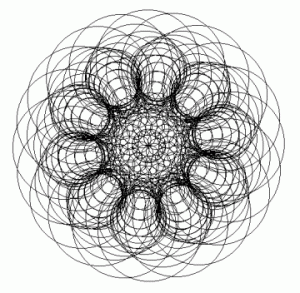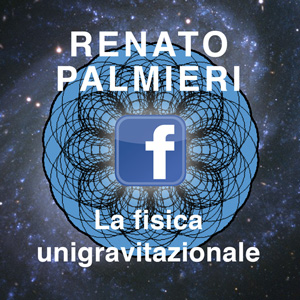Chapter 2.6 Gravity – Mass.
The famous principle of Galileo, for which falling bodies would all have the same acceleration in a vacuum regardless of their mass, is another test of the validity of the methods referred to as “scientific” by modern science.
We note, first of all, this is a “principle”, ie a postulate of empirical basis of unknown cause, so that that from Galileo through Newton to Eötvös (1922) and today (1986, with the birth of an alleged “fifth force” or “supercharge”) it is continuously subjected to experiment to confirm the veracity . This therefore has no theoretical basis, because if it had, there would clearly be no need to experience it to demonstrate its truth.
The Galileo principle is well know: the weight of a body (ie the force of gravity applied to the body) is proportional to its mass. A body which has a mass twice another one’s therefore has also two times the acceleration (for F = ma, where F and m are proportional).
This principle is also one of the two fundamental postulates of the theory of relativity (the other is the invariance of the speed of light); is also called the principle of equivalence between inertial mass and gravitational mass. Given for true the principle of equivalence, there would be another element of incompatibility between gravitation and other forces which do not have the character of proportionality to the mass subject.
However, very few know that ten years ago, in January 1986, a dramatic announcement was given: the Galilean principle turned out to be false. A group of American researchers had reconsidered the experiments carried out by Hungarian physicist Eötvös and published in 1922, which seemed to validate the principle of equivalence, finding instead that the real results affirmed the opposite: in a vacuum a feather would hit the ground before a coin, so the smaller mass would accelerated more than the larger one.
The techniques applied to the case from the “normal” science were the same as those we have set out in chap.2.3 about cold fusion: to grope a settlement, to deny the anomalous results, to make them forget. There was even then a ridiculous attempt of applying a patch, relying on the fact that ordinary people are now accustomed to believe to the wildest fantasies of theoretical physicists: they devised a “fifth force” or “supercharge” acting as a counterforce to the gravitational field on the larger mass that would make it drop more slowly: in short, a sort of miraculous levitation.
For information about the problem, we recommend reading the article quoted by A. M. Nobili on L’ASTRONOMIA (April 1987). Here for brevity and clarity of a short excerpt of the news release on the morning of January 10, 1986:
“(…) The findings of Eötvös experiment reviews of the experiments contradict the Galilean lesson for which a feather and a coin, dropped in vacuum, would plummet with the same speed and acceleration. The supercharged suggested by this study act in contrast with the force of gravity, and is a function of mass and atomic composition of a particular object: the supercharge in the coin is greater than the feather one, therefore the feather should precipitate more quickly. If supercharge exist, then one of the basic assumptions on which Albert Einstein founded the theory of general relativity, for which all falling bodies undergo the same acceleration, have to be questioned.”
From this extract it’s easy to deduce the true meaning of the patch: the collapse of the principle of equivalence would mean the loss of one of the pillars of relativity.
We now invite the readers to reflect on what we are going to say. Thirteen years before the news that we have discussed, the author of these notes wrote in an essay (cited in the bibliography: “The gravity and other “forces”, Tempo Nuovo, Nos 3-4, 1973, pag.48-50), about the context of his general conception of the problem of gravitation:
“(…) Suppose that two Galileo stones have respectively mass 1 and mass 2: the force of gravity, namely the weight, of the second one, if not exactly proportional to mass, will be imperceptibly less than two times the weight of the first. Only the smallness of the difference, in relation to the short space of paths, prevents us from detecting the error made by Galileo (…). If Galileo had dropped the two stones from cosmic heights, rather than from the tower of Pisa, he would have observed the following differences from a previous experiment: (…) at the end of their trajectory the two stones, having started the fall together, will not touch the ground at the same time, but the stone with the greater mass will touch down a little after the other (…): The largest stone is slower.”
Although the author couldn’t’ be considered as a prophet, it must be said that at least his prediction, evidence-based on nature and made at a time when it was considered crazy to challenge the Galileo principle, can only confirm the accuracy of cosmological unigravitational vision. In fact, he argued in that essay, through physical and mathematical reasons, the proportionality of gravity to the mass is approximately valid when applied on relatively small masses compared to a field vastly more intense, and gradually encroaches into the non-proportionality between force and mass when the imbalance between serious and gravitational field of reference decreases until it disappears. He also stated that thegravity varies in relation to the composition of the atomic masses.
When the comet Shoemaker-Levy falled into Jupiter, in July 1994, its fragments were wide, forming a necklace whose length has increased steadily as they approached Jupiter (1.1 million km in May: LE SCIENZE n.311, July 1994). The first question is: How this could happen, if the acceleration of gravity of Jupiter had been the same for all the fragments? Second question: why the smaller fragments landed on Jupiter first, before the bigger ones? The Authors had replied to both questions twenty-one years earlier, while the 1991 physicists were only paying attention only to splash. In the cited 1973 essay the Author had already observed, to substantiate his argument, that during the fragmentation of a single meteor in the upper atmosphere the smaller pieces fall first, the biggest later: in this the author had been a great prophet of what would have occurred with the fall of the comet.
It is thus demonstrated once again the uniqueness of behavior between gravity and any other force.



